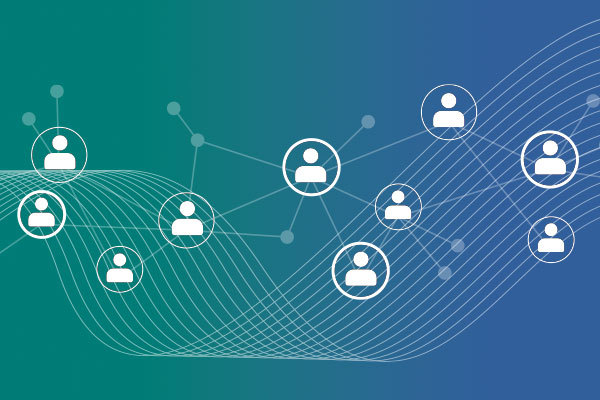Guest Blog [KBMax]: Why Dynamic Pricing Matters in B2B eCommerce
By Lauren Habig, KBMax Director of Marketing
Apr 20, 2021
Table of Contents
Our partner KBMax breaks down the pros and cons of dynamic pricing in B2B eCommerce, how you can maximize your profits while sidestepping the pitfalls.
Dynamic pricing, where prices fluctuate according to market conditions, is typically associated with B2C eCommerce. Sometimes it’s done transparently, as with airfares, which everyone understands are subject to change, and sometimes it’s more covert, as with Amazon, which changes its prices a staggering 2.5 million times a day without most of us even noticing.
The rapid rise in B2B eCommerce (forecast to grow to $1.8 trillion by 2023) means automating dynamic pricing is fast becoming essential for B2B too. We break down the pros and cons of dynamic pricing and explain the steps B2B companies can take to maximize their profits while sidestepping the various pitfalls.
What is Dynamic Pricing?
Dynamic pricing is a kind of price discrimination strategy, under which prices change according to continually fluctuating market demands. You can slice dynamic pricing in many ways to maximize revenues, but the most common approaches are as follows:
Cost-Plus Pricing: Prices change according to costs and margin requirements. Competitor-Based Pricing: Prices change according to competitors’ prices. Value-Based Pricing: Prices change according to each customers’ price elasticity. Conversion rate pricing: Prices change according to website conversion rates. Time-based pricing: Prices change according to the time of day, week, or year.
10 Pros of Dynamic Pricing for B2B eCommerce
You can maximize profits on every transaction.
The consumer surplus is the difference between the price a customer pays and the price it is prepared to pay. This figure varies by customer and circumstances, but it represents a tremendous amount of money left on the table, especially in B2B, where order values tend to be high. If you can segment your customers according to their respective price elasticity, charging higher prices to those prepared to pay more, you can mop up lots of this consumer surplus and maximize profits on every transaction.
You become more flexible and agile.
Dynamic pricing keeps you flexible to ever-changing market conditions, ensuring you always charge the right price, at the right time. Once you know which events drive demand, you can build them into your pricing strategy and make the most of spikes. The right technology, such as Zilliant Price IQ®, will detect these events before your competitors, maximizing every opportunity.
You can increase sales of slow-moving SKUs
You can use dynamic pricing to aid with stock management, lowering prices of lackluster SKUs to move stock out the door, and increase prices of products that are selling faster than you can replenish.
You can boost conversion rates.
You can configure your dynamic pricing solution to track conversion rates on your website and adjust prices to achieve maximum profitability. You can charge more when conversion rates are unusually high, and less when conversion rates are unacceptably low, settling eventually on a happy medium that provides the best returns.
You can nullify the competition.
By closely monitoring your competitors’ prices and adjusting yours accordingly, you can ensure you’re never accidentally under- or over-charging for your goods or services. This isn’t to say that you should always be the cheapest on the market. Far from it: you don’t want to devalue your products or render yourself unprofitable. But you can establish rules in the back-end of your dynamic pricing solution to ensure this never happens.
You’ll gain a deeper understanding of the market and your customers.
Dynamic pricing requires in-depth knowledge of the external forces shaping your competitive landscape. This means studying the market and gaining a greater understanding of trends, competitor traits, customer behavior, audience segments, and price elasticity. This gathered intelligence can then be used to inform other areas of your business and strategy.
You can supercharge product launches.
A type of dynamic pricing known as ‘penetration pricing’ can be used to kickstart product launches. By charging low initial prices, you can get new products into the hands of early adopters, fueling market interest. Prices can then be lifted as demand grows, and sales begin to take off.
You can sculpt customer behavior.
Bus fares are highest during peak commuter hours and cheaper in the mid-afternoon. Sure, this strategy is used to extract maximum profits from commuters, but it’s also designed to regulate the service and smooth out traffic spikes. When it comes to B2B eCommerce, dynamic pricing can nudge customers towards placing orders with longer lead times in slower-than-average months, for example.
You can save time and money with automation.
Checking competitors’ prices manually and repricing thousands of SKUs in Excel is thoroughly inefficient and an unnecessary waste of time considering dynamic pricing software can do the work for you, and better than any human could. Automating such processes saves time, money, and reduces human error.
Dynamic pricing keeps getting better.
The longer your dynamic pricing solution is running, and the more data it gathers and analyzes, the better quality its output will be. The sooner you implement dynamic pricing, the faster you can reap the maximum rewards.
5 Cons of Dynamic Pricing in B2B eCommerce
You can alienate valued customers.
If a customer discovers that they’re paying more than their competitors for the same product or service, this can lead to resentment, and subsequent bad reviews, complaints, refunds, and chargebacks. With customer loyalty lower than ever due to increased B2B eCommerce competition, it’s never been easier for a customer to switch to another supplier.
You can trigger a price war.
A race to the bottom between two competing B2B companies is no use to anyone, squeezing margins and eroding customer loyalty as prices inevitably rise to a more sustainable level. Dynamic pricing can exacerbate these issues if not configured correctly.
It can lead to increased competition.
Once customers learn that B2B eCommerce websites are operating dynamic pricing, they’ll be more likely to shop around to see which ones are offering the best deals at the time of ordering. This could ultimately push customers into the arms of competitors.
It’s a complex strategy.
Cost-plus pricing is straightforward. You know your cost; you know your margin - done. Value-based pricing and competitor-based pricing are complex, and although these strategies are very likely to reap long-term dividends (Forrester suggests that dynamic pricing boosts profitability by 25%), B2B companies often feel unable to implement them due to a perceived lack of bandwidth or push-back from end-users.
Smart customers might end up paying less.
There’s always a chance that customers will learn how to game the system. Clearing cookies, using a VPN, switching computers, or IP addresses are all ways in which customers can get around some basic dynamic pricing rules. Customers that spend time analyzing and learning your pricing patterns in detail could end up paying lower prices than they did in the first place, costing you money.
How to Mitigate the Potential Pitfalls
Transparency is the key to offsetting customer alienation. Passengers on a commercial flight know that they might have paid more for their fare than the person sitting next to them. And that’s OK, because everyone understands the status quo. Nobody likes to feel tricked: if you’re open with your customers about your dynamic pricing, they’ll understand.
A common misconception is that dynamic pricing means price-slashing or price gouging, prioritizing short-term gains over enduring loyalty. This couldn’t be further from the truth. Dynamic pricing software is simply a means to automate and improve a time-honored pricing strategy that’s widespread in the B2B world already. To be truly useful, any automated pricing solution has to be carefully tailored to meet your business context, meshing seamlessly with your company’s objectives and culture.
You should also take steps to ensure the rapid adoption of any new pricing software throughout your organization or risk push-back from end-users fearful of change. To prevent pricing managers from feeling subjugated by software, it’s wise to include them in the solution’s development, refinement, and subsequent rollout, making sure that a manual override function is available for use in abnormal situations.
For more information, contact me on LinkedIn or at KBMax.com.



